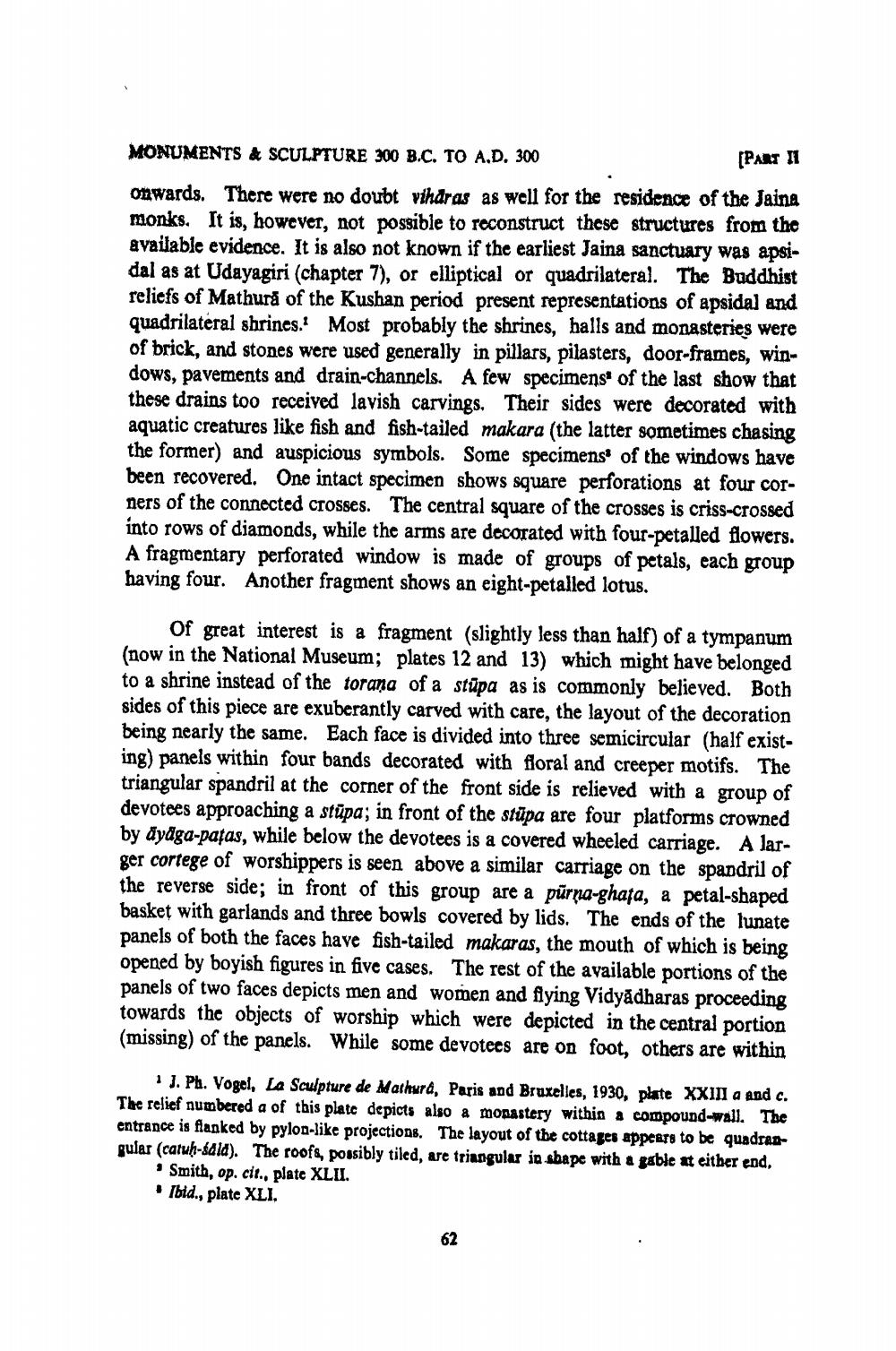________________
MONUMENTS & SCULPTURE 300 B.C. TO A.D. 300
[PART 11
onwards. There were no doubt vihdras as well for the residence of the Jaina monks. It is, however, not possible to reconstruct these structures from the available evidence. It is also not known if the earliest Jaina sanctuary was apsidal as at Udayagiri (chapter 7), or elliptical or quadrilateral. The Buddhist reliefs of Mathura of the Kushan period present representations of apsidal and quadrilateral shrines. Most probably the shrines, halls and monasteries were of brick, and stones were used generally in pillars, pilasters, door-frames, windows, pavements and drain-channels. A few specimens of the last show that these drains too received lavish carvings. Their sides were decorated with aquatic creatures like fish and fish-tailed makara (the latter sometimes chasing the former) and auspicious symbols. Some specimens of the windows have been recovered. One intact specimen shows square perforations at four corners of the connected crosses. The central square of the crosses is criss-crossed into rows of diamonds, while the arms are decorated with four-petalled flowers. A fragmentary perforated window is made of groups of petals, each group having four. Another fragment shows an eight-petalled lotus.
Of great interest is a fragment (slightly less than half) of a tympanum (now in the National Museum; plates 12 and 13) which might have belonged to a shrine instead of the torana of a stūpa as is commonly believed. Both sides of this piece are exuberantly carved with care, the layout of the decoration being nearly the same. Each face is divided into three semicircular (half existing) panels within four bands decorated with floral and creeper motifs. The triangular spandril at the corner of the front side is relieved with a group of devotees approaching a stūpa; in front of the stūpa are four platforms crowned by dyaga-patas, while below the devotees is a covered wheeled carriage. A larger cortege of worshippers is seen above a similar carriage on the spandril of the reverse side; in front of this group are a pürna-ghata, a petal-shaped basket with garlands and three bowls covered by lids. The ends of the lunate panels of both the faces have fish-tailed makaras, the mouth of which is being opened by boyish figures in five cases. The rest of the available portions of the panels of two faces depicts men and women and flying Vidyadharas proceeding towards the objects of worship which were depicted in the central portion (missing) of the panels. While some devotees are on foot, others are within
* J. Ph. Vogel, La Sculpture de Mathura, Paris and Bruxelles, 1930, plate XXIII a and c. The relief numbered a of this plate depicts also a monastery within a compound-wall. The entrance is flanked by pylon-like projections. The layout of the cottages appears to be quadrangular (catuh-sald). The roofs, possibly tiled, are triangular in shape with a gable at either end,
• Smith, op. cit., plate XLII.
Ibid., plate XLI.




